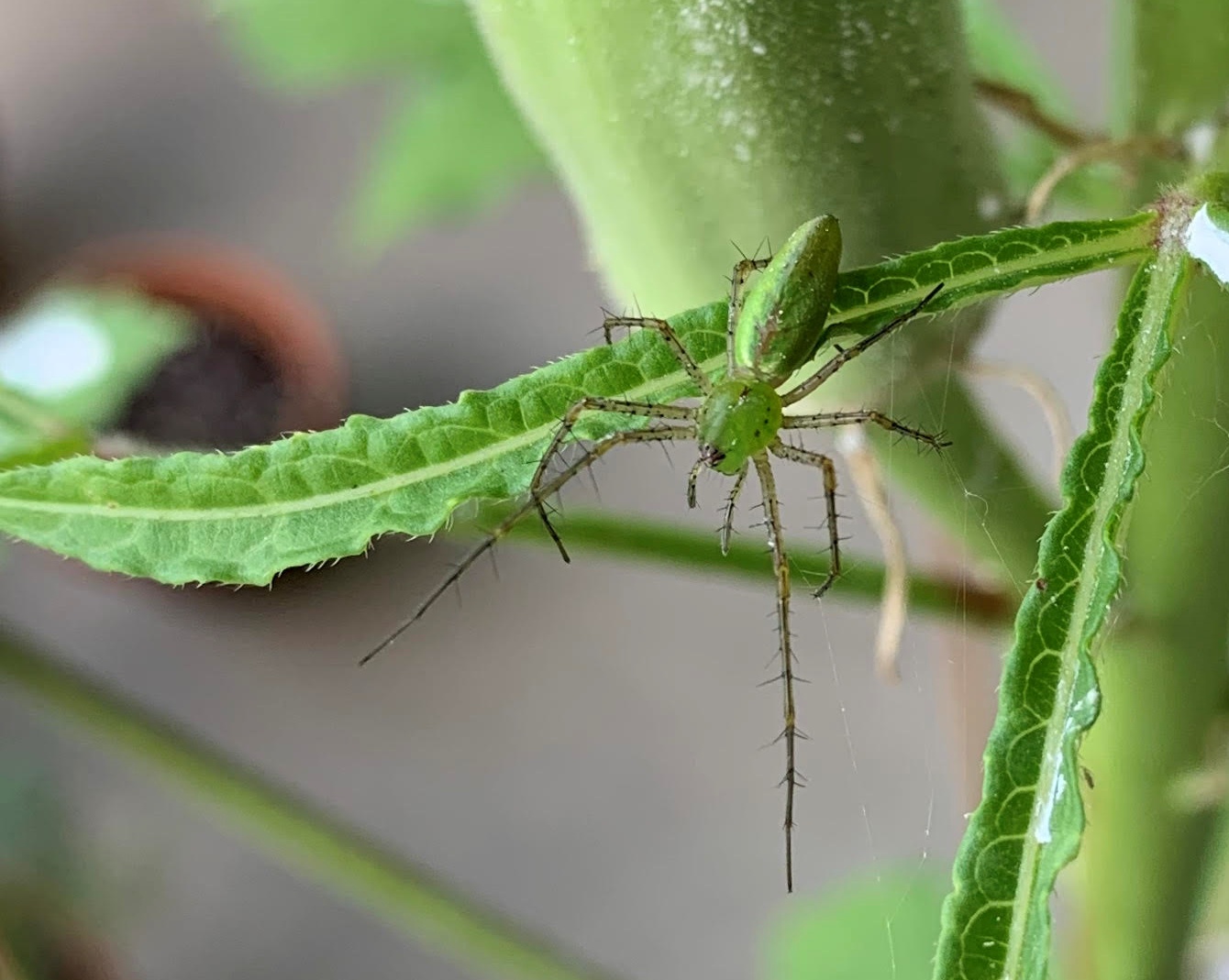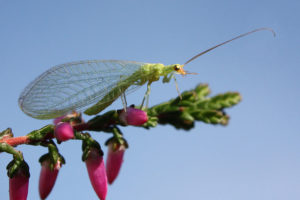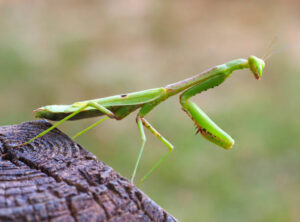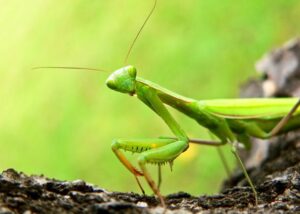The Green Lynx Spider is a beautiful, bright green arachnid with long legs. It is found in the southern United States, especially in the Gulf Coast region, as well as some locations in Northern California. It also lives in Mexico, Central America, Venezuela, Jamaica, and the West Indies. The spider has a wide-ranging habitat that includes tall grasses and wildflowers, but also green shrubs and shrub-like plants in landscapes and gardens. I’ve found several in my garden, especially on my okra and cucumber plants.
How to Identify
The Green Lynx Spider derives its name not only from its beautiful color but also because it “runs” and then pounces on its prey, much like a lynx. Females measure approximately 5/8″ long, excluding their long legs, while males are slightly smaller and more slender. The legs of both males and females are green-yellow with black spots and long black hairs or spines. They also have a chevron pattern on the dorsal side of their abdomen. They may also have a red patch between their eyes and other random reddish markings on their bodies.
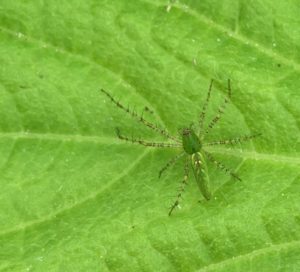
One of the interesting things about Green Lynx Spiders is that their color changes from green to pale yellow with red-brown streaking in the late summer. Pregnant females can change their color to yellow, purple, or white to match their environment, but the process can take about two weeks.
Beneficial Arachnid
Green Lynxes are classified as hunting spiders, which means they do not spin a web to trap their prey but jump on them instead, sometimes trailing a silken dragline. These arachnids are classified as garden beneficials because they have been known to hunt harmful insects such as the cabbage looper moth, that damage crops. However, the downside is that they also prey on beneficial insects and pollinators.
The lynx-like spider not only bites its prey, but it can also spit venom a distance of several inches, especially when it feels threatened. While it has been known to bite humans, its bite, although painful, is said to be non-lethal.
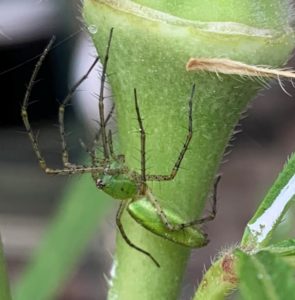
Life Cycle
Sometime during the months of September and October, Green Lynx Spiders will mate while hanging from a single strand of silk. The female will then spin an egg sac that measures up to an inch in diameter. It will house, on average, 200 bright orange eggs, but may hold as many as 600 eggs.
The egg sac is initially light green, but it will turn gray or light brown as it ages. The female will anchor the sack by attaching silk threads to nearby stems. She may also build a cover for it out of leaves. Most females spin only one egg sac, but those living in warmer climates may create as many as three.
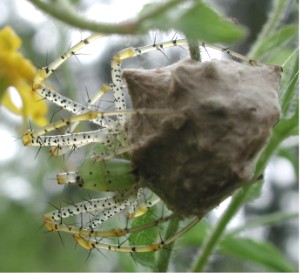
The expectant mother will fiercely guard the egg sac by positioning herself either on top of or beneath the sack as she wraps her legs around it. She will spit venom and pounce on anything that threatens the eggs.
The female Green Lynx Spider will continue to guard her young once the eggs hatch, about two weeks later. They will remain in the sac for another two weeks as they undergo eight instars to reach maturity. The female spider will remain on guard duty until the spiderlings are old enough to protect themselves. The young spiders will overwinter in areas where they will be protected from predators. Green Lynx Spiders have a life span of only about one year.
The Green Lynx Spider is a beautiful and unique spider that can play a beneficial role in your garden. Keep an eye out for them, especially in the fall months as the females will be guarding their egg sacs. Just be sure to not get too close!
Video of Green Lynx Spider
